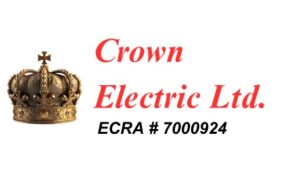A branch circuit is the part of an electrical wiring system that runs from the final overcurrent protection device (such as a circuit breaker or fuse) to the outlets, lights, or appliances it serves. It is essentially the path that brings electrical power from the electrical panel to the individual appliances or receptacles within a building.
In simple terms, a branch circuit is the circuit that connects the circuit breaker to the first appliance in the home that has an outlet or switch.
Branch circuits can be dedicated to a specific appliance or general outlets and lighting in residential, commercial or industrial settings.
Other types of circuits that are not branch circuits are feeder circuits (which carry power from the main service to a branch panel) and service circuits (which carry power from the utility’s power source to the main electrical panel).
Subcircuit elements
The basic elements of a subcircuit typically include:
circuit breaker or fuseThis is an overcurrent protection device located in the electrical panel, designed to interrupt the flow of electricity in the event of an overload or short circuit.
A circuit breaker is a switch that automatically disconnects power when a circuit draws more current than it is designed to handle, protecting wiring and appliances from damage. A fuse does the same thing by melting when it overheats, thus cutting off the circuit.
2. Wires (connectors)Electrical wires that carry current from the electrical panel to outlets, lights, or appliances. These wires typically include:
hot wire (usually black or red): Carries electrical current to the device.
neutral wire (usually white): Completes the electrical circuit by returning current to the source.
ground wire (usually bare or green): Provides a safe path for electrical current in the event of a fault.
3. Outlets or sockets:The points where electrical appliances or devices are connected to the branch circuit to access electrical power. There are a variety of electrical outlets. Different types of outlets (standard, GFCI, AFCI, 240V, etc.) serve different purposes, such as protecting against ground faults in wet areas or providing higher power for larger appliances.
4. KeysDevices that control the flow of electricity to specific parts of a circuit, such as lights or other fixtures. There are single-pole, three-way, and four-way switches depending on the complexity of control required for the circuit.
5. Appliances or fixtures:End-use appliances connected to a branch circuit, such as lights, fans, or kitchen appliances. Branch circuits can serve general outlets or dedicated outlets for heavy-duty appliances (such as a water heater or air conditioning unit).
6. Junction boxesJunction boxes protect wiring connections and provide a place from which circuits can branch out to other parts of the building. Junction boxes protect wiring connections from damage, dust, and moisture and prevent electrical shock or fire. They also ensure that wiring connections are located safely and easily accessible for future maintenance.
Types of subcircuits

Common types of branch circuits are classified based on their purpose and the type of electrical load they serve. Below are the most common types of branch circuits found in homes and commercial buildings:
General Purpose Sub-Circle
veryProvides power to public outlets and lighting in a home or building.
to request:Used for everyday items such as lamps, televisions, computers, and small kitchen appliances.
example15 or 20 amp circuit for regular electrical outlets throughout the house.
Cables: NM-B cables. For external circuits, UF-B cables. 14/2 Wire gauge for 15 amp circuits and 12/2 Wire gauge for 20 amp circuits.
Devices Branch Department
very:Intended for operating specific devices that require more electricity than traditional outlets can provide.
to requestLarge kitchen appliances such as refrigerators, microwaves, dishwashers and washing machines.
example20 amp circuit for a kitchen appliance, such as a refrigerator.
Cables: usually 12/2 North – B or 10/2 MC Metal Clad
Single Sub-Circuit (Dedicated)
very:Supplies electricity to a single appliance or appliance that needs its own circuit due to high power requirements.
to requestAppliances such as ovens, dryers, air conditioners, or water heaters.
example:30 to 50 amp circuit for electric stove or clothes dryer.
Cables: Service entrance cable (SER cable) (8/3 or 6/3) or metal clad cable (MC)
Lighting Branch Circle
very:Supplies power exclusively to lighting fixtures.
to requestLights in rooms, hallways and other areas.
example15 amp circuit for all lighting fixtures in living room or hallway.
Cables: Romex NM-B (usually 14/2 or 12/2 Wire gauge for 15 amp or 20 amp circuits)
Dedicated circuit for critical equipment
veryIt is used in specialized environments, such as medical facilities or data centers, to provide power to critical equipment that cannot be interrupted.
to requestMedical devices, servers, or other vital equipment that requires constant, stable power.
example:Hospital dedicated circuits for life support equipment.
Cables: Depending on the type of critical equipment, it can be: Hospital Grade Metal Coated (MC) Power cables or shielded cables.
Branch circuit cables
Below is a list of common cables used in branch circuits, divided by residential, commercial, or industrial use:
Residential Applications
These cables are used for homes and small apartment buildings where the wires are usually hidden inside walls or ceilings.
Use of non-metallic sheathed cable (NM cable)Internal wiring for lighting, public outlets and appliances in dry and protected areas.
to requestWalls, floors and ceilings in homes and residential buildings.
Use of underground feeder cable (UF cable)External and ground wiring for lighting, garages, sheds and outbuildings.
to request:Wet or damp locations such as outside lighting or powering outdoor structures.
Using the service entrance cable (SER cable)Branch circuits that carry higher loads for larger appliances such as ovens, dryers, or subpanels.
to request:Residential applications requiring higher amperage circuits such as electric stoves, air conditioning units, or sub-feeder panels.
High Temperature Resistant Nylon (THHN) Coated Wires are made of thermoplastic material.Usually used in pipes intended for internal wiring.
to requestConnecting household appliances and outlets when running inside the pipes.
Business Applications
Commercial wiring often needs to meet higher requirements due to the variety of equipment and safety regulations in businesses and offices.
Use of metal clad cable (MC cable)Commercial wiring for outlets, lighting and appliances in areas requiring additional mechanical protection.
to request:Office buildings, retail spaces and large commercial facilities. Suitable for exposed or unprotected areas.
High Temperature Resistant Nylon Coated Wires (THHN/THWN) are made of thermoplastic material.Commonly used in channel drawing in commercial settings.
to request:Drains and ducts in offices.
Use of underground feeder cable (UF cable):Exterior or underground commercial wiring.
to request:Underground wiring for signs, outdoor lighting and other outdoor communications.
Industrial applications
Industrial wiring requires strong cables for high power machinery and hazardous conditions.
Use of metal clad cable (MC cable)Industrial applications for power distribution and branch circuits.
to requestFactories, warehouses and industrial facilities, especially where wires may be subject to environmental corrosion or physical damage.
High Temperature Resistant Nylon Coated Wires (THHN/THWN) are made of thermoplastic material.Industrial environments where wires are pulled through conduits.
to requestIndustrial environments with high heat, humidity or harsh conditions for power circuits, lighting and motor connections.
All high quality branch circuit cables are available at Nassau National Cable at excellent prices.



